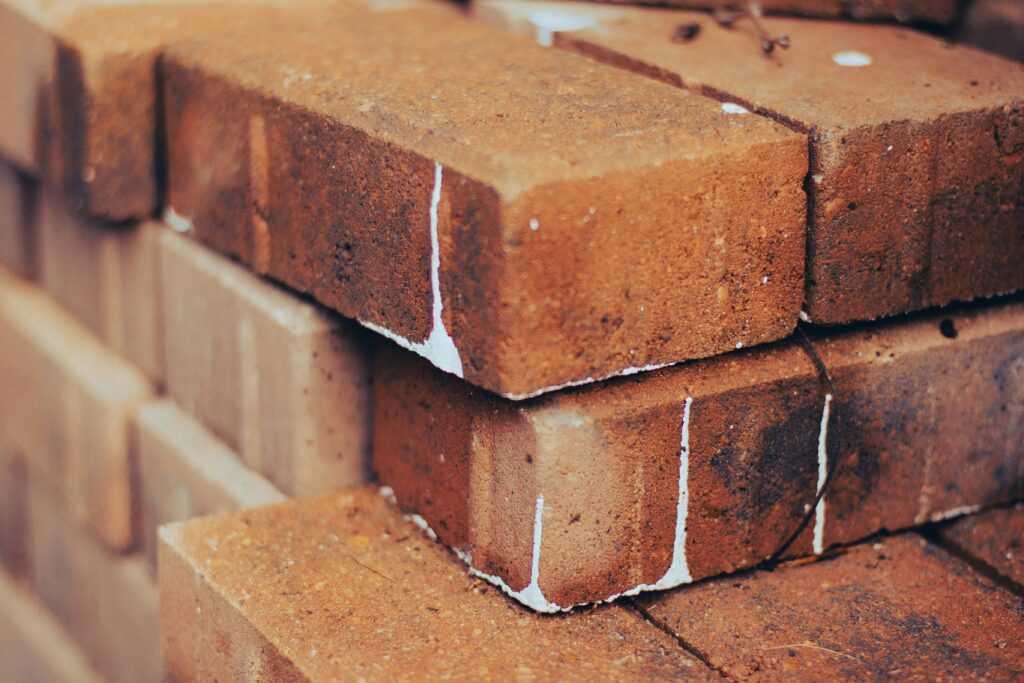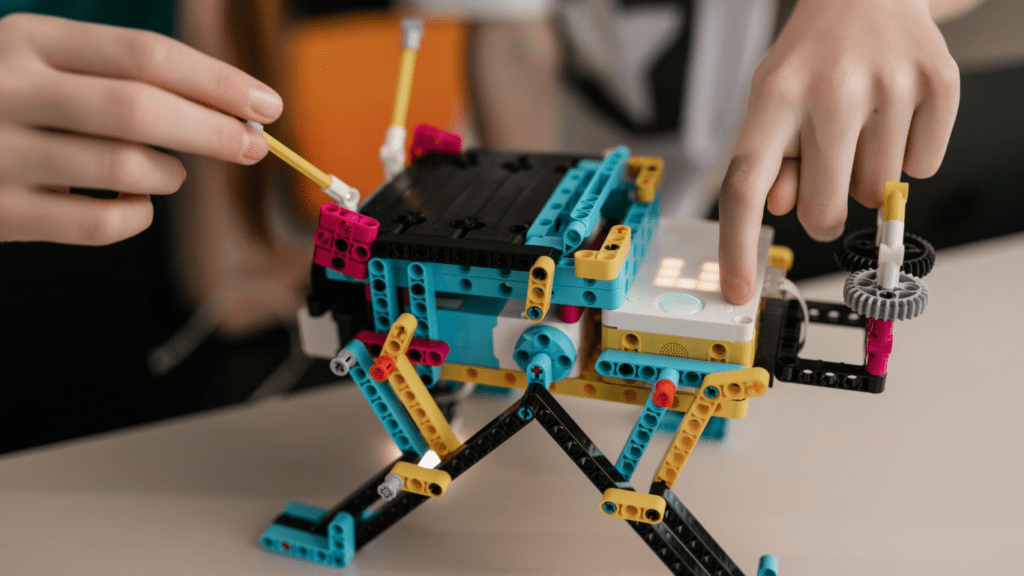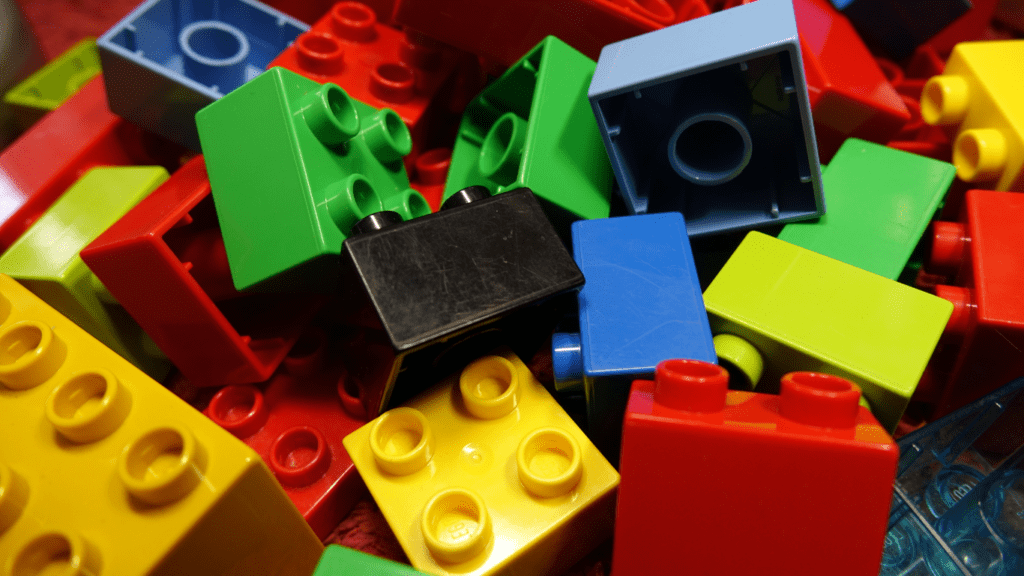Know What You Want to Build
Before you throw a kit in your cart, pause. Ask yourself what actually excites you cars? Castles? Spaceships? Real world landmarks? Your first brick building kit sets the stage for your future builds, so pick something you’ll enjoy seeing on your shelf long after the last piece clicks in.
Think long term. If you’re more into Star Wars than sports cars, don’t force yourself to start with a Ferrari just because it looks cool on the box. This build should pull you in, not feel like a chore.
Also, don’t overreach. Starting small doesn’t mean going boring. Compact kits give you quick wins and help you build confidence fast. Save the thousand piece mega set for later right now, you want something that gets you hooked and keeps the momentum going.
Match Kit Complexity to Your Skill Level
Just because a kit says “starter” doesn’t mean it’s a cakewalk. Some so called beginner sets pack in dense instructions, odd part layouts, or advanced techniques that can quickly turn fun into frustration. If you’re brand new to brick building, look for kits clearly marked as beginner friendly and stick with ones under 500 pieces to start. Fewer pieces usually mean a smoother build flow and less room to get overwhelmed.
Also, pay close attention to the instruction design. The best beginner kits feature large, clear steps, consistent progressive builds, and minimal jumping between sub assemblies. Beware of booklets that try to cram too much into one frame or that gloss over key connection points. That’s where burnout sneaks in.
If you’re not sure where to start, we’ve broken it down for you in our step by step Beginner Building Guide.
Piece Count and Age Range What They Really Mean
It’s tempting to judge a brick kit by its piece count alone. Bigger numbers sound impressive, but they don’t always mean better. A 1000 piece set made of mostly tiny, repetitive parts might grind your weekend into frustration. Meanwhile, a well designed 300 piece build can offer a satisfying challenge with less risk of burnout. Piece count tells part of the story but complexity, variety, and instructions fill in the rest.
Then there’s the age range on the box. It’s a decent guide, not a rulebook. A kit labeled 8+ can be an ideal first project for teens or even adults who are just starting. Conversely, some 12+ kits might overwhelm younger builders depending on how patient or mechanically inclined they are. The key is matching emotional readiness with physical dexterity.
If you’re helping a child get into building or you’re starting from square one yourself stick with clear instructions, colorful designs, and fewer steps. Also, choose builds that finish in under an hour or two. Early wins build early confidence. Once that momentum kicks in, you or your kid will be ready for more ambitious projects before you know it.
Quality Over Quantity

When it comes to your first brick building kit, more pieces don’t always equal a better experience. In fact, the quality of the kit can make or break your enjoyment and possibly your interest in the hobby altogether.
Why Clutch Power Matters
One of the key features of a good brick kit is reliable clutch power the right amount of grip between bricks. Too loose, and the model falls apart. Too tight, and pieces are frustrating to fit together.
Choose reputable brands known for consistent fit
Poor clutch power can lead to unstable builds and lost motivation
Trusted kits feel solid even during handling
The Problem with Knockoff Kits
Knockoff sets might look appealing because of price, but they often come with major drawbacks:
Inconsistent or weak brick connections
Missing or badly fitting pieces
Vague or confusing instructions
Limited compatibility with major brands
These issues can turn what should be a fun and satisfying hobby into a tedious struggle.
What Premium Kits Bring to the Table
Higher quality kits might cost more, but the benefits pay off especially for beginners who want a good first experience:
Clear, well designed instruction booklets with logical steps
Precision molded pieces with accurate colors
Thoughtful design that supports both building and display
Expansion options that grow with your skills
For your first build, investing in quality over quantity builds confidence and helps you truly enjoy the process.
Instruction Clarity is Everything
Even the most exciting kit can crash and burn if the instructions are a mess. If you’re just starting out, steer clear of manuals that are wall to wall text you’re building a model, not decoding a contract. Check that the kit includes clear, step by step visuals. Good instructions don’t skip ahead; they show each move logically and cleanly. Each step should feel like progress, not guesswork.
Pro tip: zoomed in views, color coding, and part call outs can make or break your experience. A kit that holds your hand just enough can be the difference between giving up or getting hooked. And if you can’t preview the manual before buying, check online reviews or builds on forums before committing. Clarity isn’t a luxury it’s step one to actually finishing what you start.
Room to Customize
Flexibility Beats Rigidity
Not all brick building kits are built the same some are designed to be followed step by step while others encourage more creativity. If you’re just starting out, choosing a more open ended kit can help you explore your own style and build confidence along the way.
Rigid kits follow strict, structured designs with little room for improvisation
Flexible kits offer extra pieces or modular builds, giving you the freedom to modify or expand
Beginner tip: Start with a semi structured set that allows guided play with customizable elements
Build Confidence Through Creativity
Open ended builds are especially valuable for beginners. They reduce pressure to get everything perfect while still offering a rewarding experience. You’ll develop spatial thinking, gain familiarity with different types of pieces, and start to grasp basic techniques without stress.
Encourages playful experimentation
Builds early problem solving skills
Increases enjoyment and sense of ownership over your builds
Want to Explore More?
If you’re ready to go beyond step by step instructions and embrace your creativity, check out our full guide:
See how to get creative in our beginner building guide
Final Checks Before You Buy
Before you hit the checkout button, pause. A little recon goes a long way. First, read the user reviews don’t just skim for stars. Look for mentions of clear instructions, missing pieces, and overall satisfaction. If reviews talk about confusion or frustration, that’s a red flag, especially for beginners.
Still unsure how complex the build really is? Watch a video or two. Seeing someone actually build the kit gives you a fast reality check on difficulty, clarity, and pacing. You’ll catch small details like tricky connections or hard to spot parts that product photos never show.
Last filter? Ask yourself if the theme and outcome excite you enough to stick with it. You don’t want your first project to turn into shelf clutter. The best beginner kits aren’t just easy they’re engaging enough to make you want to finish and proud enough to display.

 is an experienced contributor at Play Briks Construction, where he specializes in exploring the educational potential of construction toys in early childhood development. His work emphasizes the importance of hands-on play in fostering creativity, problem-solving skills, and spatial awareness among children. Patrick is dedicated to providing parents and educators with practical insights and strategies for integrating construction play into learning environments. He also focuses on the latest trends and innovations in the toy industry, ensuring that his audience stays informed and engaged.
is an experienced contributor at Play Briks Construction, where he specializes in exploring the educational potential of construction toys in early childhood development. His work emphasizes the importance of hands-on play in fostering creativity, problem-solving skills, and spatial awareness among children. Patrick is dedicated to providing parents and educators with practical insights and strategies for integrating construction play into learning environments. He also focuses on the latest trends and innovations in the toy industry, ensuring that his audience stays informed and engaged.

